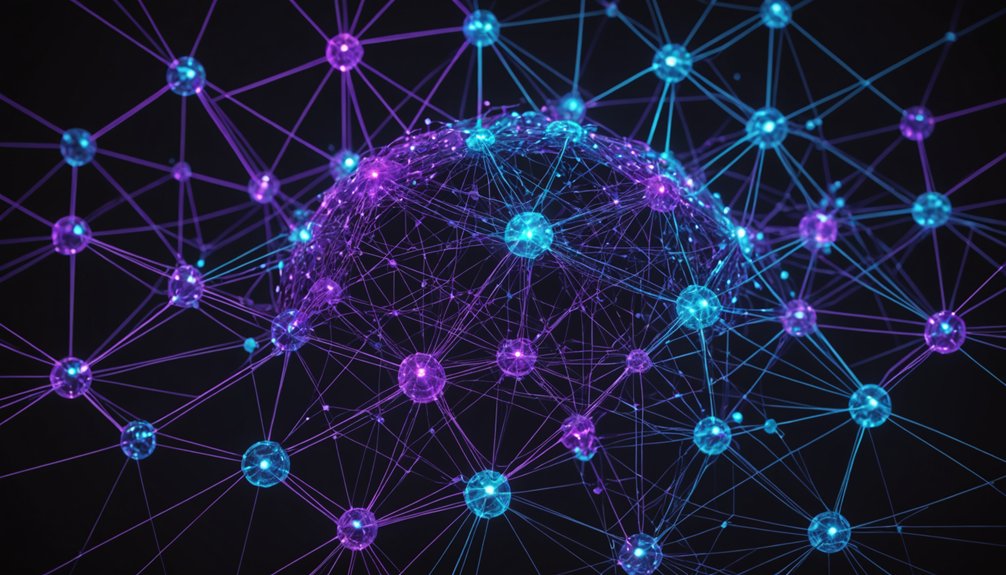The vanishing gradient problem plagues deep neural networks during training. It occurs when gradients become extremely small as they flow backward through layers. Sigmoid functions are major culprits—their derivatives max out at 0.25, creating microscopic updates in deeper layers. Networks basically freeze up. Learning stalls, models fail, and developers tear their hair out. Modern solutions include ReLU activations, batch normalization, and residual connections. These techniques aren't just fancy jargon—they're what makes deep learning actually work.

While neural networks have revolutionized AI, they're not without their frustrating quirks. One of the most annoying? The vanishing gradient problem. It's like watching a game of telephone where the message gets weaker and weaker until it's just a whisper. In deep neural networks, gradients shrink to practically nothing as they travel backward through layers. Thanks, backpropagation.
The culprit? Often it's activation functions. The sigmoid function was popular in early networks, but its derivative maxes out at a measly 0.25. Do the math. Multiply 0.25 by itself several times as you go through layers, and you'll end up with something microscopic. No wonder deep networks struggled! Like the initial steps of model training in machine learning, choosing the right activation function is crucial for success. Building a proper network architecture requires careful consideration of layers and their activation functions.
The consequences are pretty grim. Networks train painfully slowly or just give up. They can't learn long-term dependencies worth a damn. It's like trying to teach someone a lesson by whispering from another room. Nothing gets through. The deeper layers barely update their weights, while shallow layers hog all the learning. Talk about unfair distribution of knowledge.
You can spot this problem a mile away. Training crawls along like a snail. Deeper layer weights barely budge. Loss improvements? Negligible. The model might as well be taking a nap. Proper weight initialization techniques can help maintain non-vanishing gradients during training.
Thankfully, researchers aren't completely helpless. ReLU activation functions have been a game-changer, with derivatives of 1 for positive inputs. No more multiplication by tiny numbers! Batch Normalization keeps inputs stable. It's like giving the network a strong cup of coffee every few layers. Residual networks offer an elegant solution by implementing skip connections that allow gradients to flow unimpeded through deep architectures.
This issue hits all types of networks – feedforward, recurrent, you name it. Deep belief networks? Struggle city without proper countermeasures. Some networks even need architectural downsizing just to function. Imagine building a skyscraper but only being able to use the bottom few floors. What a waste of potential.
Neural networks might be smart, but they sure need a lot of babysitting to avoid these mathematical pitfalls.
Frequently Asked Questions
How Do GANS Handle Vanishing Gradients Differently Than Traditional Neural Networks?
GANs face a unique vanishing gradient challenge. Traditional networks battle this issue through activation functions like ReLU or architecture tweaks like skip connections.
GANs? They've got extra problems. When their discriminator outperforms the generator, gradient feedback becomes useless.
Solutions? Wasserstein loss functions. Modified training procedures. Special architectures.
It's not just about depth anymore; it's about balance between adversaries. The generator needs meaningful feedback to learn. No feedback, no progress. Simple as that.
Can Transfer Learning Mitigate Vanishing Gradient Problems?
Transfer learning can indeed help fight those pesky vanishing gradients. It basically gives networks a head start with pre-trained weights that are already pretty solid. No need to learn everything from scratch!
These transferred models often come with architectures like ResNets that have built-in gradient protections. Plus, they've already learned complex features, so there's less reliance on tiny, vanishing signals.
Not a perfect solution, but definitely a useful weapon in the deep learning arsenal.
What Hardware Optimizations Can Reduce Vanishing Gradient Issues?
Hardware optimizations tackling vanishing gradients? Here's the deal.
Specialized chips like TPUs and modern GPUs accelerate training dramatically. Distributed computing spreads the computational load. Memory optimizations allow larger batch sizes—keeps gradients stronger.
Parallel processing helps maintain consistent updates. And let's not forget specialized hardware with higher precision calculations.
These tweaks don't solve the core math problem, but they sure make it less painful to work around it.
How Do Vanishing Gradients Affect Reinforcement Learning Algorithms?
Vanishing gradients wreak havoc on reinforcement learning algorithms. They basically throttle the learning process. When gradients become too small, agents can't effectively update their policies. Learning stagnates.
Early network layers? Barely changing at all. This leads to poor exploration, suboptimal reward maximization, and frustratingly slow convergence. The agent gets stuck in mediocrity.
Initial supervised finetuning helps somewhat, providing a better starting point before reinforcement kicks in. But the problem persists without proper architectural solutions.
Do Quantum Neural Networks Suffer From Vanishing Gradients?
Yes, quantum neural networks definitely suffer from vanishing gradients.
They hit what researchers call "barren plateaus" where gradients shrink exponentially with system size. It's actually worse than classical networks.
Quantum re-upload models show vanishing high-frequency components too.
Some solutions? Controlled-layer architectures and skip connections might help. Scientists are working on it.
The problem threatens the whole promise of quantum machine learning. Pretty inconvenient, right?




